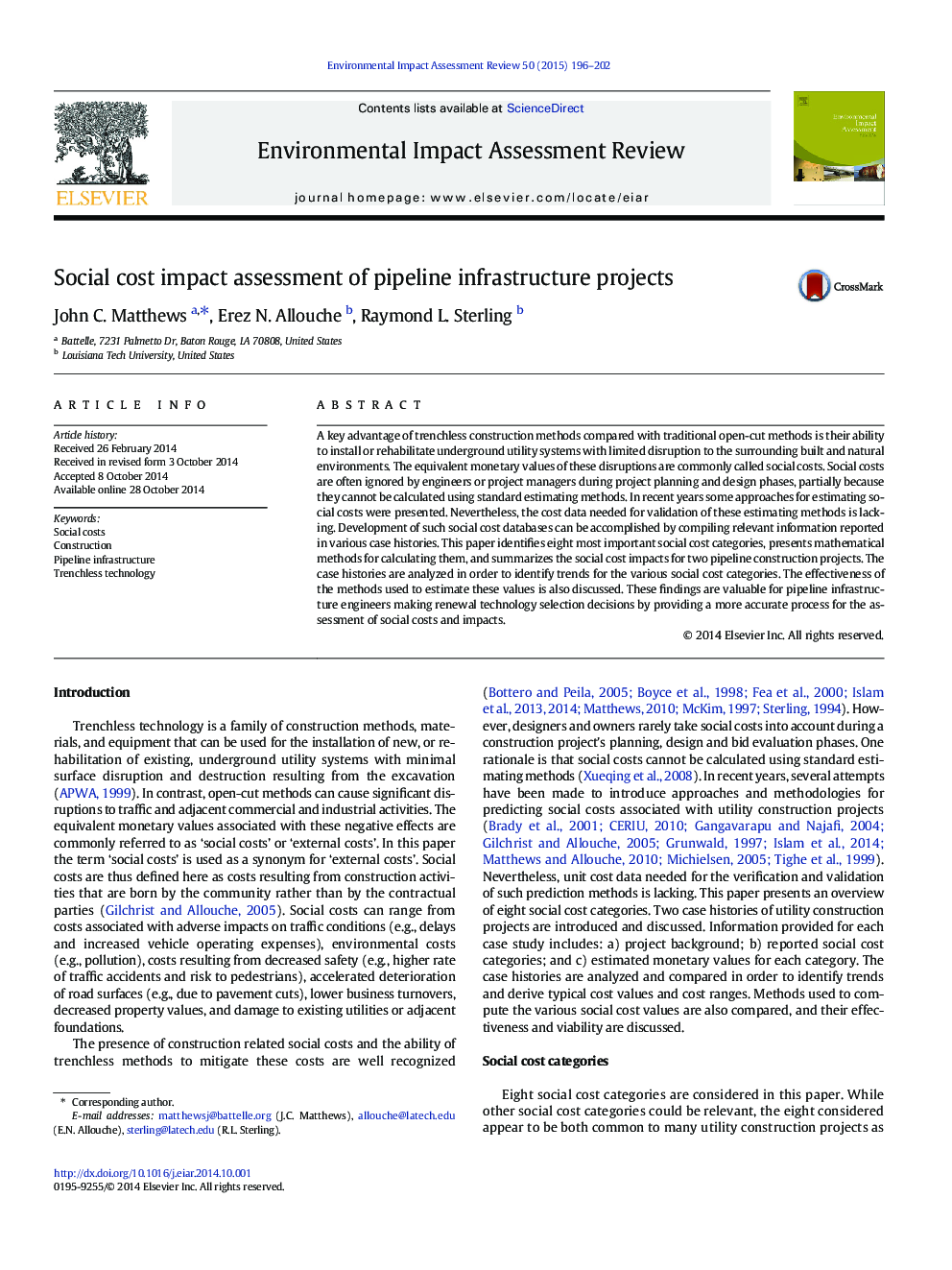| Article ID | Journal | Published Year | Pages | File Type |
|---|---|---|---|---|
| 7465465 | Environmental Impact Assessment Review | 2015 | 7 Pages |
Abstract
A key advantage of trenchless construction methods compared with traditional open-cut methods is their ability to install or rehabilitate underground utility systems with limited disruption to the surrounding built and natural environments. The equivalent monetary values of these disruptions are commonly called social costs. Social costs are often ignored by engineers or project managers during project planning and design phases, partially because they cannot be calculated using standard estimating methods. In recent years some approaches for estimating social costs were presented. Nevertheless, the cost data needed for validation of these estimating methods is lacking. Development of such social cost databases can be accomplished by compiling relevant information reported in various case histories. This paper identifies eight most important social cost categories, presents mathematical methods for calculating them, and summarizes the social cost impacts for two pipeline construction projects. The case histories are analyzed in order to identify trends for the various social cost categories. The effectiveness of the methods used to estimate these values is also discussed. These findings are valuable for pipeline infrastructure engineers making renewal technology selection decisions by providing a more accurate process for the assessment of social costs and impacts.
Related Topics
Physical Sciences and Engineering
Energy
Renewable Energy, Sustainability and the Environment
Authors
John C. Matthews, Erez N. Allouche, Raymond L. Sterling,
